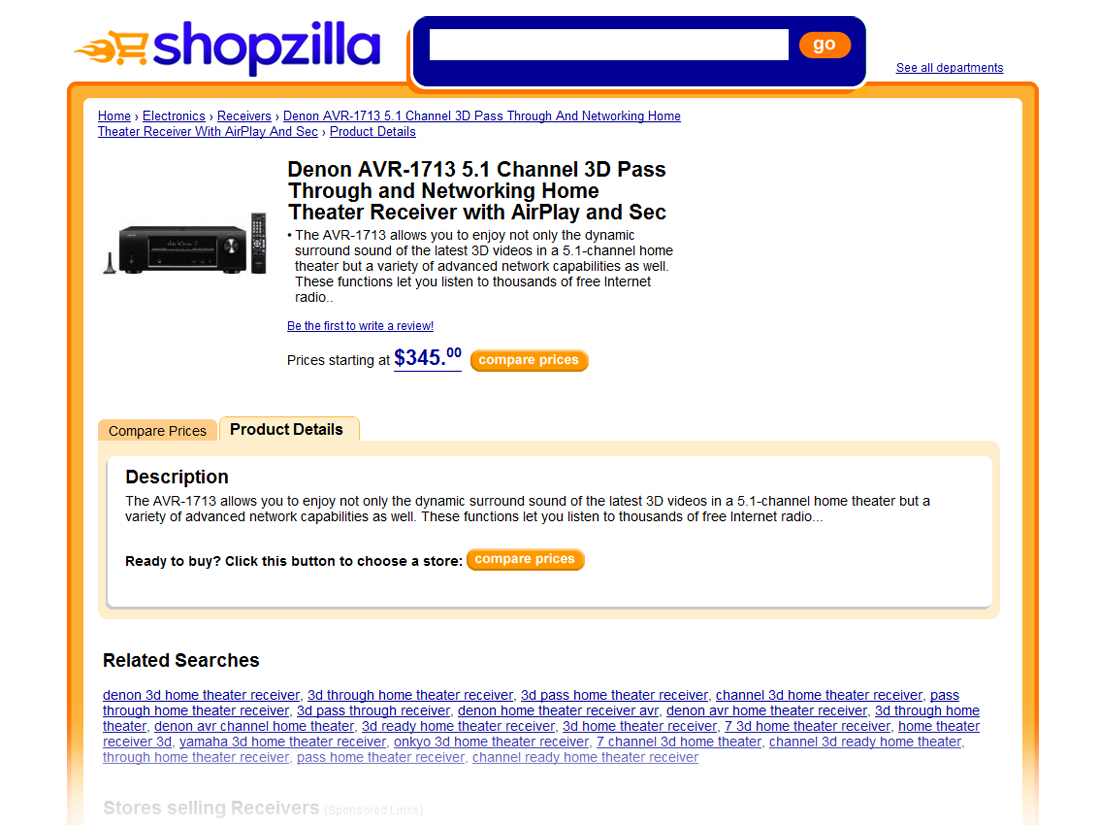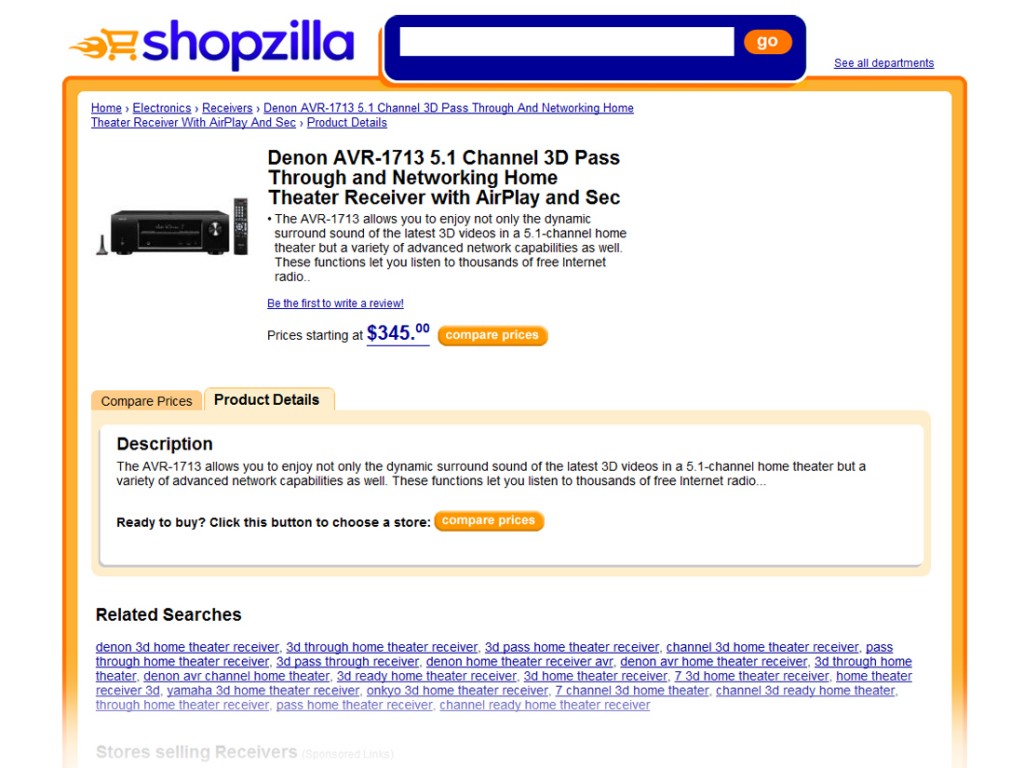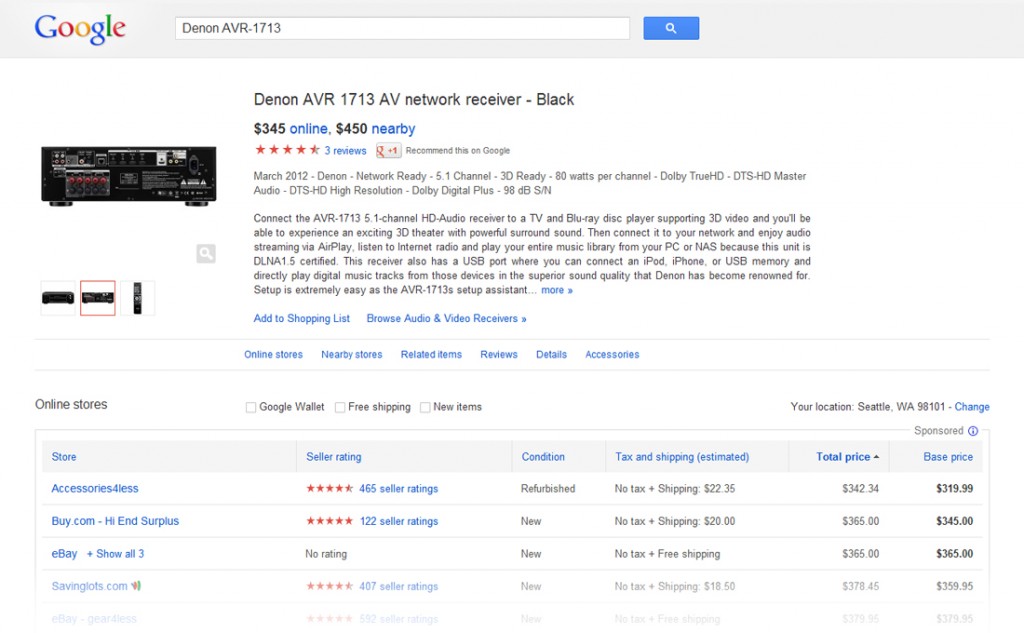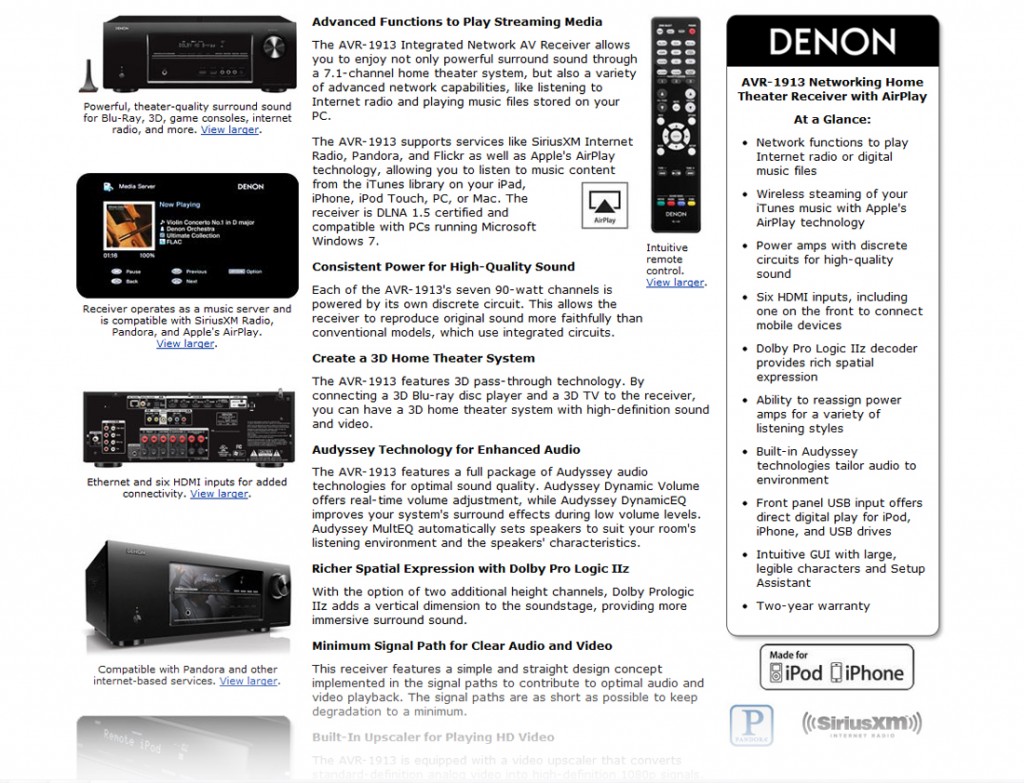Comparison Shopping Engines: Want to Compete with Amazon? Start Offering Remarkable Content

Editor’s Note: Today’s post is a guest post from Trinity Hartman, Managing Editor of Content Ping, a blog that talks about how to optimize content for ecommerce. Content Ping is part of content26, a company that creates rich content for retailers selling on Amazon and other ecommerce sites. She’s writing to comparison shopping engines, but her tips on content can be applied to specific retailers as well.
It’s time for the folks at comparison shopping engines (CSEs) to realize they have a content problem.
I spent quite a bit of time recently clicking around the product pages of top comparison shopping sites such as Nextag, Shopzilla, and Google Product Search. Browsing CSEs was a dreadful experience. Mediocre product-level content popped up everywhere. Most of the CSE product pages I found were littered with single-paragraph product descriptions and inadequate product images. Ugh.
If CSEs want to compete with Amazon as places where online shoppers go to discover products and compare prices, they’ll need to improve their content. I’ll provide tips on improving product pages at the end of this post, but first, let’s take a look at the difference between how Amazon and CSEs treat content.
Content is King: Case Study
Say you’re on the hunt for a new stereo receiver. You can’t do much better than the Denon AVR 1713 AV. I found this product on Amazon as well as two CSEs (Shopzilla and Google Product Search).
At $345 it’s not exactly cheap, but it will cover all your entertainment needs. Or will it? Let’s take a look at the product information to find out.
To put it nicely, Shopzilla takes a minimalist approach to the product page.

How long is Shopzilla’s product description? Just under two sentences.
lThe AVR-1713 allows you to enjoy not only the dynamic surround sound of the latest 3D videos in a 5.1-channel home theater but a variety of advanced network capabilities as well. These functions let you listen to thousands of free Internet radio…
Say what? Don’t leave me hanging! I have no idea from that description whether this will work with my iPod, much less whether it can handle my HDTV. Even worse, there’s only one product photo and it does not enlarge enough to let me visually decipher any of the receiver’s features.
The Google Product Search page is a bit of a step up, if you can puzzle your way through the convoluted paragraph-long description.

Here’s a typical sentence:
Then connect it to your network and enjoy audio streaming via AirPlay, listen to Internet radio and play your entire music library from your PC or NAS because this unit is DLNA1.5 certified.
Sure, whatever that means. At least there are three images that do a pretty good job of showing you what the receiver has to offer.
Both Shopzilla and Google offer very little helpful information compared to Denon’s Amazon product page.

This Amazon product page has everything an online shopper would need to know about the Denon AVR 1713 AV.
It starts out with a one-paragraph description summing up the product and continues with additional sections detailing the features and benefits. Here’s a great example of a paragraph that explains the benefits of a given feature:
Each of the AVR-1913’s seven 90-watt channels is powered by its own discrete circuit. This allows the receiver to reproduce original sound more faithfully than conventional models, which use integrated circuits.
I also counted eight images on this product page, a sidebar, and a comparison chart at the bottom.
This is the type of product page consumers love when they research products online. We’ve found that adding enhanced product pages increases conversion for our clients by anywhere between 15 and 35 percent.
Will Google Shopping Take On Amazon?
There will be some who say it’s unfair to expect CSEs to offer stellar product-level content. After all, CSEs are all about price comparisons. They show you where to get the best deal and then send you on your way.
But Google, for one, realizes it needs to do more than that if it wants to compete with Amazon. Whether or not Google has its own e-commerce ambitions, it’s clear that the company is determined to become a destination for product and brand discovery.
But that will require better content, something which Google seems to recognize.
In a recent webinar Google Shopping Senior Product Manager Jon Venverloh did with CPC Strategy, he mentioned he’d like to see product descriptions written in a way that appeals to shoppers.
“A lot of times we see titles or descriptions written apparently by an engineer who had great technical knowledge of the product…but maybe doesn’t understand the demographics or psychographics of the shopper,” he said.
Making Great Content Work
Here’s my advice to CSEs on how they can become go-to sites for product discovery and research:
- Obtain outstanding product descriptions
- Make room at the product page level for enhanced content (lifestyle images, video, 3D images, magnification, buying guides, etc.)
- Pay attention to product page design
- Include more consumer-generated content (product reviews)
Improving product pages does not need to require huge investments of time or money on the part of CSEs. As the Denon stereo example shows, great product-level content (written and visual) often already exists and can be easily reworked to fit the specific needs of a CSE.
At content26, we create cornerstone and derivative content for our manufacturing clients all the time. The process is inexpensive, efficient, and effective. We’ve seen e-commerce marketplaces begin pushing hard in recent years to improve product-level content on their site. CSEs need to do the same or they’ll get left behind.
About The Author:
 A former cheesehead, Trinity’s writing career has taken her from Washington State to Europe and back again. She joined content26 in 2011 and currently acts as the managing editor for the company’s content merchandising blog Content Ping. In her free time Trinity enjoys exploring the rugged landscapes and soundscapes of the Pacific Northwest.
A former cheesehead, Trinity’s writing career has taken her from Washington State to Europe and back again. She joined content26 in 2011 and currently acts as the managing editor for the company’s content merchandising blog Content Ping. In her free time Trinity enjoys exploring the rugged landscapes and soundscapes of the Pacific Northwest.
